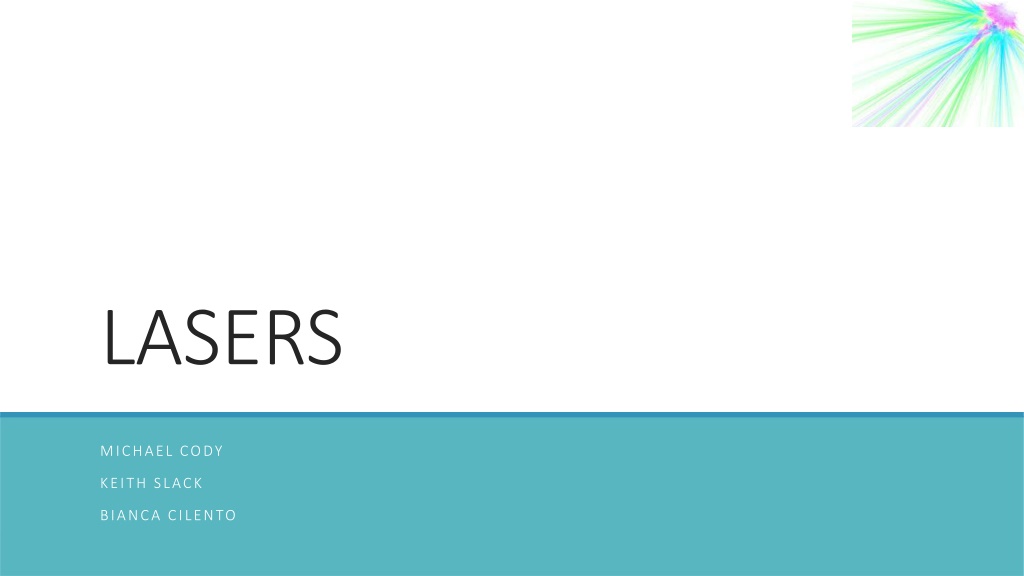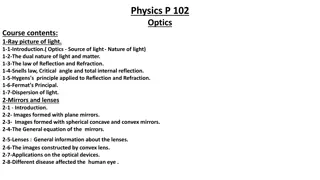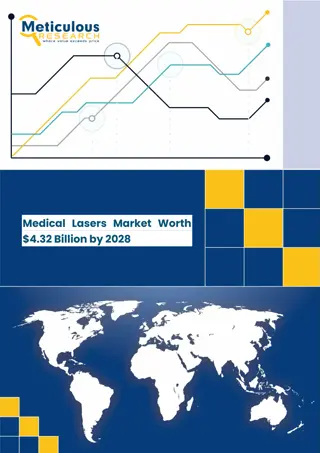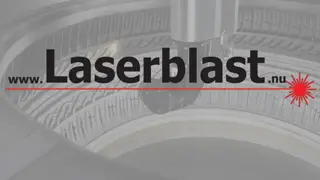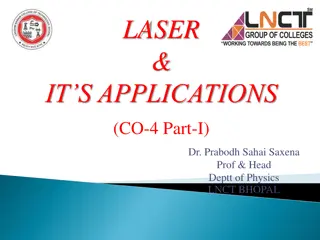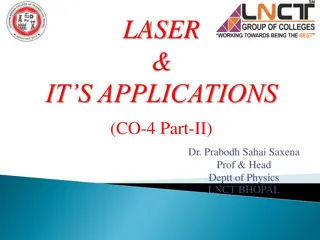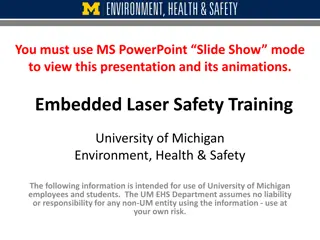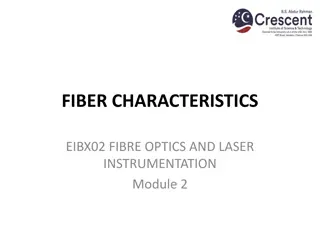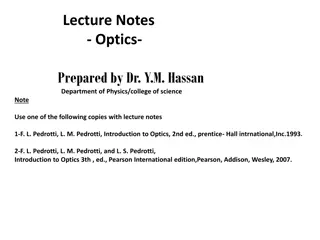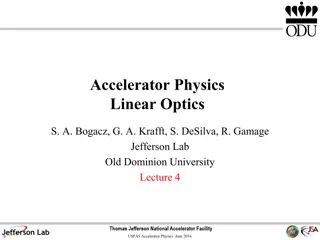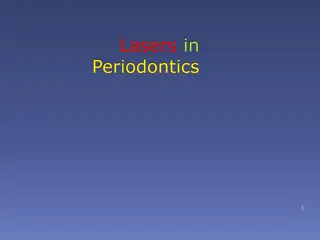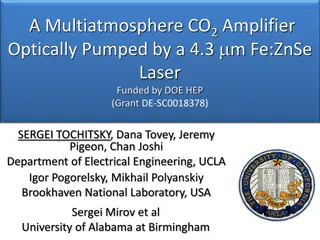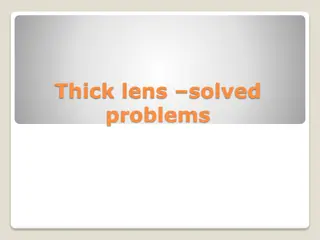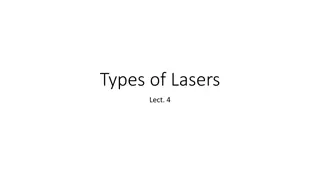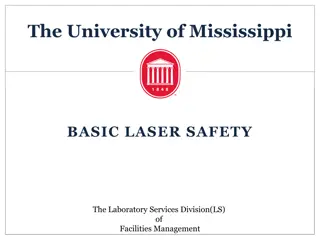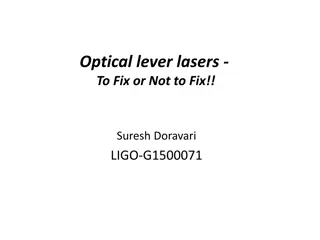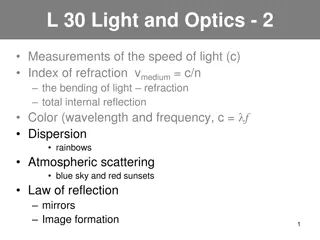Understanding Lasers: The Science, Applications, and Optics Involved
A laser emits light through stimulated emission, with applications in various fields like geology, astronomy, and medicine. Learn about the physics of lasers, their construction, and how they are utilized in holography, surgery, and more.
Uploaded on Sep 29, 2024 | 0 Views
Download Presentation

Please find below an Image/Link to download the presentation.
The content on the website is provided AS IS for your information and personal use only. It may not be sold, licensed, or shared on other websites without obtaining consent from the author. Download presentation by click this link. If you encounter any issues during the download, it is possible that the publisher has removed the file from their server.
E N D
Presentation Transcript
LASERS MICHAEL CODY KEITH SLACK BIANCA CILENTO
What is a laser? oA laser is a device that emits light through the process of stimulated emission. LASER is actually an acronym for Light Amplification by the Stimulated Emission of Radiation. oStimulated Emission is the process of an incoming photon reacting with an excited electron and making it to drop to a lower energy level. When the electron drops to a lower level, light is produced. oLasers come in many different forms; there are lower power laser points that are basically colored light and they range all the way up to high power lasers that have applications in geology, astronomy, and physics. oLight that comes out of a laser is a narrow beam. This image shows the visible light spectrum of an excited neon atom. This is what the photon reacts with to create the laser light.
Optics Involved oOptics is the study of light and its behaviors and interactions. Lasers are light beams cause by stimulated emission and photons reacting. oSince lasers are light, they have the same properties. When the light enters a new medium with a different density, the light bends. This property is called refraction and can be seen in the image below. oLasers can also reflect off of surfaces; in the diagram below there is total internal reflection happening as the light bounces off the surface between the water and the air and back into the water. oThere is no dispersion in a laser, since a laser is only one color. Since there is only one frequency and one wavelength, it would not be able to split like white light does. This image shows a laser in water. The difference in medium is causing the light produced by the laser to bend. There is total internal reflection happening since no light is coming out of the water. And it is refracting coming out of the water.
How It's Made oIn its simplest form, a laser is a tube that concentrates light over and over again until it emerges into a really powerful beam. oA laser pointer is made of It consists of a laser diode, a circuit board, a case, and optics. oThe three main parts a laser is made up of an energy, a laser medium, and two or more mirrors that form an optical resonator oLasers require gain mediums, a way to energize it, and a way to provide optical feedback. in order to produce light. oGain Medium: A material with the ability to amplify the light of a specific wavelength through stimulated emission. (The power of the light increases). oThe most common form of optical feedback is a pair of mirrors on either end of the gain medium, this is called optical cavity.
How it's Made (Cont'd) oThe first laser was built in 1960 by Theodore H. Maiman at Hughes Research Laboratories, based on theoretical work by Charles Hard Townes and Arthur Leonard Schawlow. o Most lasers contain other elements that are used to change the properties of the light such as polarization, wavelength, and shape. oHow lasers work in theory
Uses and How it's Used oLasers have applications in: o Making holograms o Medicine/Surgery - Carbon Dioxide Lasers o Destroying Cancer cells o Reconstructive eye surgery/Sealing the retina o Computer devices laser mice, pointers, CD ROMS, DVD ROMS o War Machines tanks, guns o Robotics, Image Processing, and Calculating distances o Laser cutters cutting industrial metals o Hair and Tattoo Removal o Optics labs showing different properties of light o Toys and laser pointers This is an example of a Carbon Dioxide laser. They are used in many surgeries over scalpels because they are more precise. o :)
Resources Used oLasers, World of Invention (2006). Science in Context. oHow lasers work in theory (2011). Minute Physics. oLaser Diagram. Quora. oHow a Laser Pointer is Made. Made How oWhat are Lasers Used For. WiseGeek. oCat Playing with Laser Pointer. Shaunspradlin.
